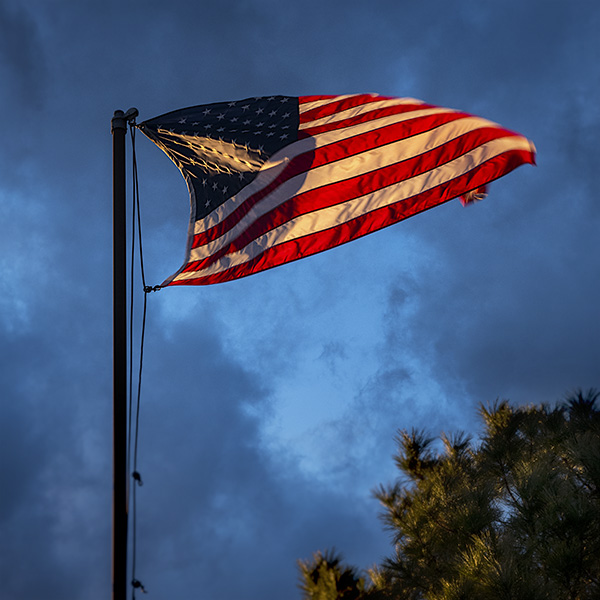
by successfulbob | cloud photography, landscape photography, Lumix GX85, photography creativity, photography gear
When the Elements Come Together
I’ve heard it called shooting on the edge. Edge of what you ask? Edge of everything. Edge of the weather. Edge of day and night. Any time there is a contrast from the norm it’s a great time to be creating images.
Case in point.
Here’s an excellent argument for always having a camera handy as Jay Maisel always coaches. I walked out of one of the galleries where my art is sold and came across this moment that was there for maybe three minutes.
 The golden light of sunset sneaking through a hole in the clouds
The golden light of sunset sneaking through a hole in the clouds
It was the confluence of the elements that I think makes for an interesting photograph. A small shaft of light appeared and highlighted the flag which was lowing in the wind. The background to the flag was enhanced by the darkened and scattered storm clouds.
There is a tendency to go to ground when the weather is not sunny. Most dramatic photography occurs when the weather moves toward the inclement. Next time you see the clouds starting to form head out and see what you can see.
This image was made with the Lumix GX85 ** and the G Vario 12-35mm f2.8 lens. ***
Yours in Creative Photography, Bob
PS – ** I linked to what I consider a geat vacation and always have camera and lenses. Bang for the buck as far as quality. *** Pro level quality lens
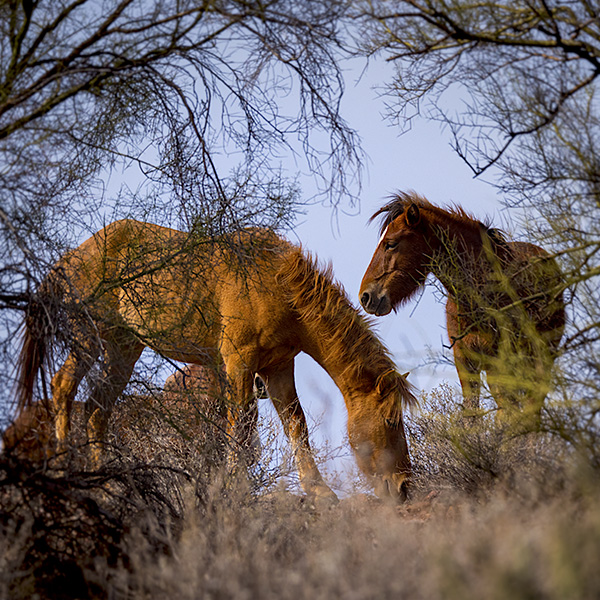
by successfulbob | bird photography, LumixGH5, wildlife photography
Salt River Wildlife
Just gotta say, “Arizona kicks ass in the variety of subject matter to photograph!”
Had an opportunity to go photograph with my friend Sara Goodnick. She was helping me find the wild horses in the Salt River Area of Fort Mcdowell, AZ. This area is ripe with wildlife. In addition to a couple of horse groups, we came across there was a pretty substantial avian population scattered along the banks of the river. I’ll be looking forward to exploring this area more often in the future. Arizona has so many different ecosystems within a relatively short distance it makes for a great place to play. An hour in almost any direction gives you a significant change in flora and fauna. I believe I have been remiss in photographically exploring my state.
Let’s take a look at a few of the captures. We had just a slight soft layer of clouds for the day which softened shadows ever-so-much which made photographing at the time of day acceptable.
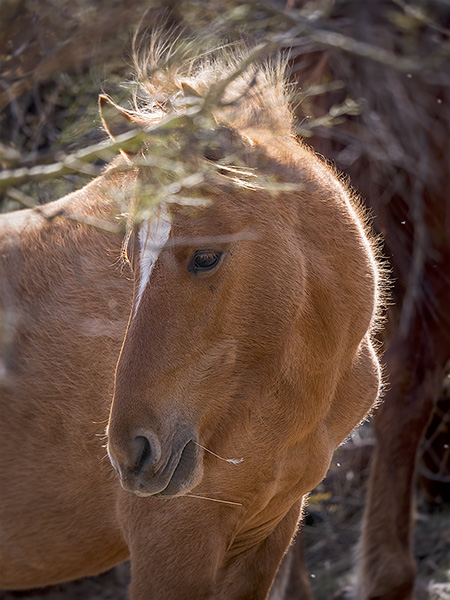 Such gentle creatures. Salt river horse up on the hillside. Rim light made this image work for me.
Such gentle creatures. Salt river horse up on the hillside. Rim light made this image work for me.
 The framing of the horses with the scrub brush helps tell the story of the wild animals in their environment.
The framing of the horses with the scrub brush helps tell the story of the wild animals in their environment.
Dig the beard on the horse in the back!
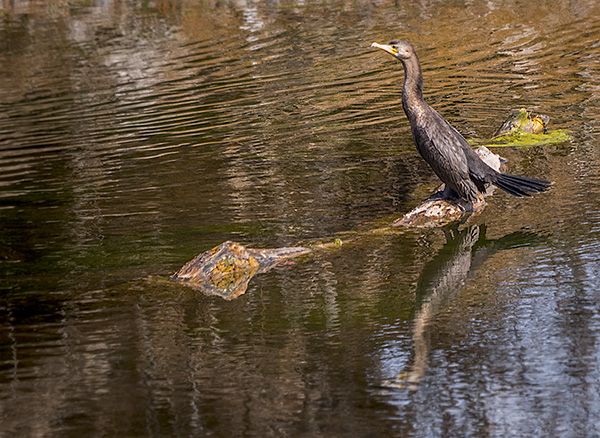 Down by the water I enjoyed the log, cormorant and its reflection. A long lens helps make it possible to get close-up images of the wildlife with disturbing them.
Down by the water I enjoyed the log, cormorant and its reflection. A long lens helps make it possible to get close-up images of the wildlife with disturbing them.
All images captured with the Lumix GH5 and the Leica 100-400mm lens.
I think part of my renewed excitement about my pursuing wildlife photography is the use of the Leica 100-400mm lens on the Lumix bodies with five extra stops of hanholdability. Having that reach has made a HUGE difference in the number of ‘keepers’ from my wildlife excursions.
More from this adventure soon.
Yours in Creative Photography, Bob
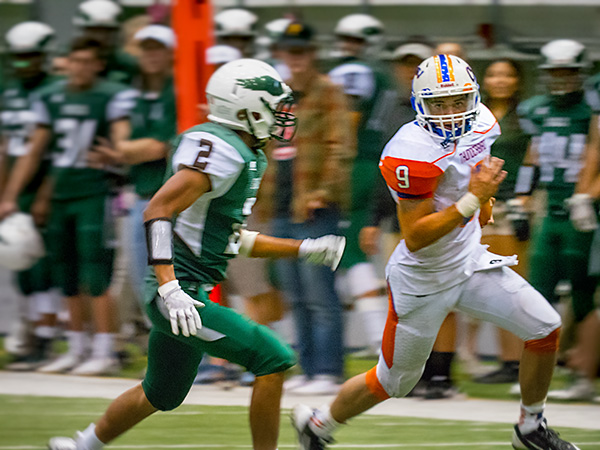
by successfulbob | Lumix Lounge, LumixGH5, people photography, photography gear
Photographing Sports and the Lumix GH5
First, let me start this post with the fact that I do not shoot sports on a regular basis. The best photography in any genre, especially fast-moving subjects, comes from practice. Knowing the game and anticipating where the peak action will occur makes a considerable difference in the quality of the images.
On with the post.
With that disclaimer out of the way, I felt that it would be an interesting exercise to photograph a football game under the lights. Karl Mullings (find Karl’s work here), a photographer friend from Flagstaff among others, had been asking me how the GH5 camera would do under the lights with fast-moving action. I only had experience with the camera in low light shooting wildlife so I couldn’t give him a qualified answer. He asked if I would bring the camera and photograph a football game with him.
Off to Flagstaff where there were a couple of surprises in store. Lighting was lower than I thought it would be Due to my inexperience there was a challenge in finding the action. During the first quarter, I found myself missing a lot of shots cutting off the players as they ran out of the frame. I started to get the hang of it a couple of quarters later and here are some results.
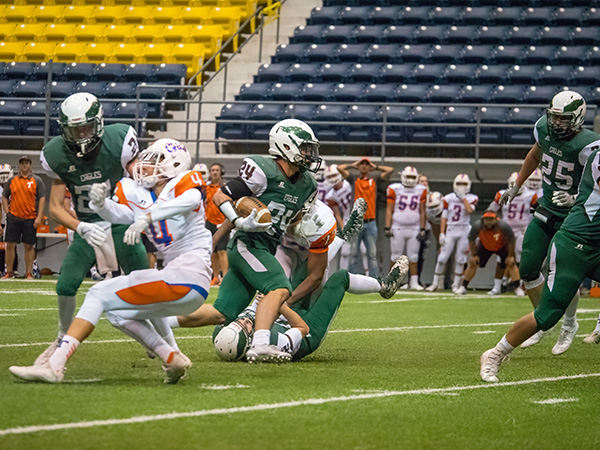 Image photographed at ISO 6400 Lumix GH5 with Lumix G Leica DG Vario-Elmarit 100-400mm lens (200-800mm 35mm full-frame equivalent)
Image photographed at ISO 6400 Lumix GH5 with Lumix G Leica DG Vario-Elmarit 100-400mm lens (200-800mm 35mm full-frame equivalent)
I was surprised by the reach and handhold-ability of the camera and lens combination. The five-axis in body stabilization, plus the lens stabilization was pretty amazing in allowing a reasonably slow shutter speed while almost stopping action with no camera blur.
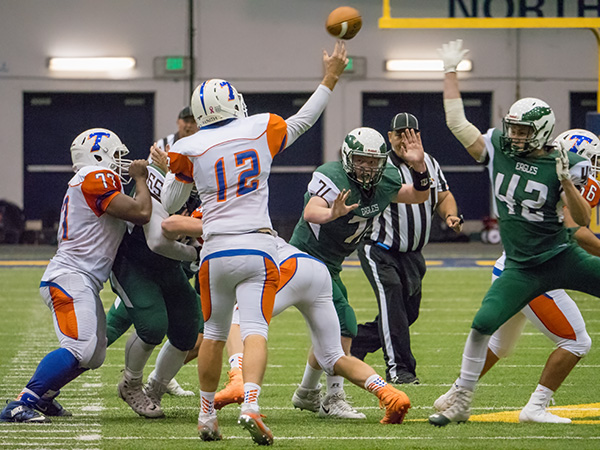 Image photographed at ISO 6400 Lumix GH5 with Lumix G Leica DG Vario-Elmarit 100-400mm lens
Image photographed at ISO 6400 Lumix GH5 with Lumix G Leica DG Vario-Elmarit 100-400mm lens
 Image shot at ISO 6400 Lumix GH5 with Lumix G Leica DG Vario-Elmarit 100-400mm lens
Image shot at ISO 6400 Lumix GH5 with Lumix G Leica DG Vario-Elmarit 100-400mm lens
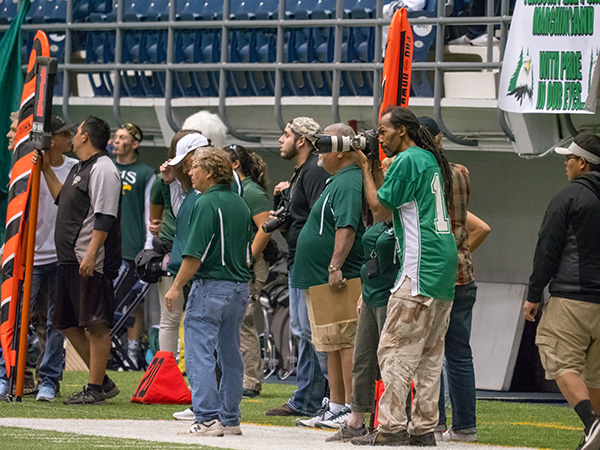 My buddy Karl, hard at work on the sidelines.
My buddy Karl, hard at work on the sidelines.
Tomorrow we’ll talk about freezing action even more using an ISO of 12,800 and post processing of images.
Yours in creative Photography, Bob
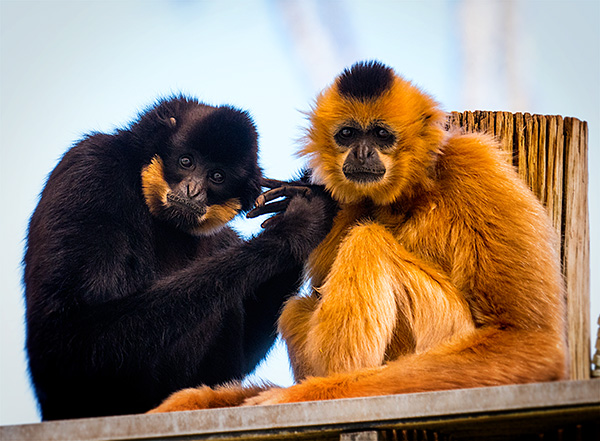
by successfulbob | LumixGH5, photography creativity, photography gear, wildlife photography
A Trip to the Zoo in Phoenix
The zoo can be a great place to begin to study animal behavior to help make you a better wildlife photographer.
When I photograph wildlife, I try to get behavior images that I believe have a bit more impact than capturing the animals while they are stock still. The secret to making that work is learning and knowing an animal’s micro-movements that occur just before they are about to do something different. Often you will see a small twitch. A turn of the head or some other indication they are about to move. The only way to see that is to watch intently over long periods of time and patterns will begin to emerge.
 Primates in the Phoenix Zoo. I had to be exceptionally patient in waiting for eye contact with these Gibbon (buff cheeked?) monkeys.
Primates in the Phoenix Zoo. I had to be exceptionally patient in waiting for eye contact with these Gibbon (buff cheeked?) monkeys.
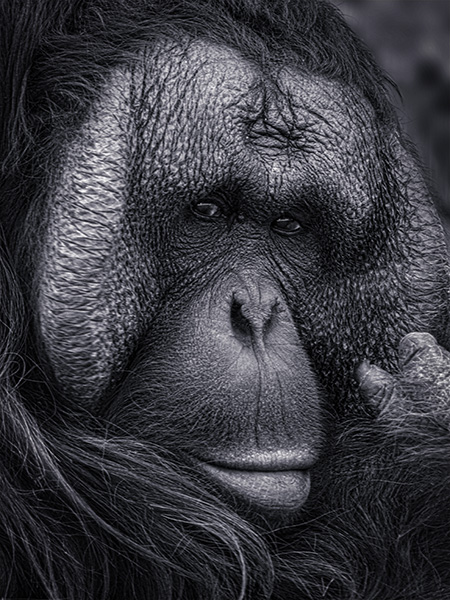 Again, I was waiting for eye position helped make this a more moving portrait of the orangutan. This image was captured at 1/30th of a second handheld with an 800mm equivalent lens. (see my camera notes below)
Again, I was waiting for eye position helped make this a more moving portrait of the orangutan. This image was captured at 1/30th of a second handheld with an 800mm equivalent lens. (see my camera notes below)
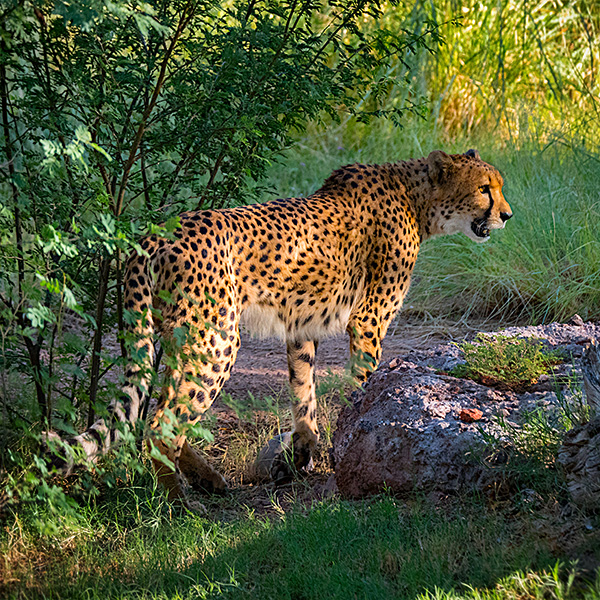 A beautiful animal, the jaguar, looks to another across the pen.
A beautiful animal, the jaguar, looks to another across the pen.
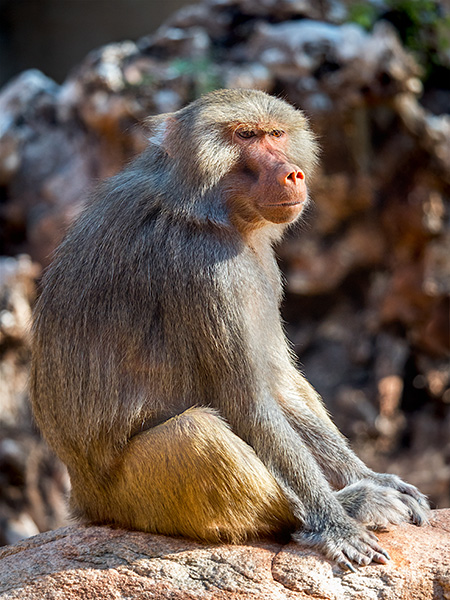 This baboon appears lost in thought. Primates being as close to human expression as you can get in the animal kingdom keep me interested for long periods of time.
This baboon appears lost in thought. Primates being as close to human expression as you can get in the animal kingdom keep me interested for long periods of time.
One of the things I find extremely helpful in photographing wildlife is a lens with a long reach. This can allow you to fill the frame with your subject. All of these images were made with the Lumix GH5 and the Leica 100-400mm DG Vario-Elmar f4.0-6.3 lens. The five-axis image stabilization and the lens stabilizer working together allow for hand-holding and getting sharp images. The jaguar was at 1/800th of a second. The Gibbons were at 1/320th of a second. If an animal is still such as the baboon, the 1/160th of a second is no problem at all.
The tools we have at our beck and call are kinda amazing and allow us to capture photos that were virtually impossible only a few years ago.
Yours in creative Photography, Bob
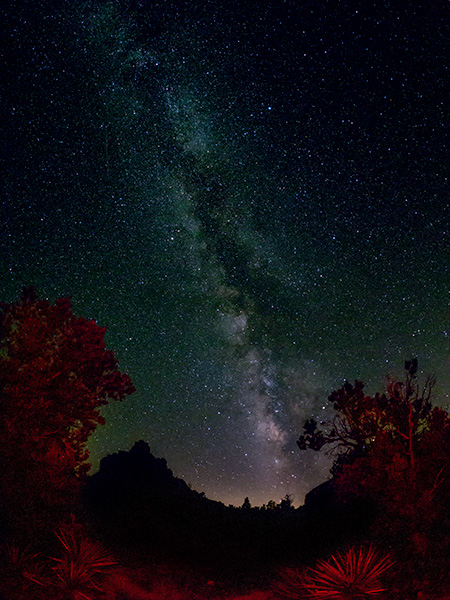
by successfulbob | landscape photography, LumixGH5, photography, photography gear, star photography
Photographing the Night Skies
I was always a little hesitant about photographing the sky after dark. Never could quite make it work out. Either the focus was off, or exposures were wrong, or both!
Then it came time for me to start working on those captures as I was jealous of those who were killing it in the night sky photography showing incredible renditions of the Milky Way.
If you have had the same problems let me share some of the things that have made a difference for me.
 Milky Way photographed at Bell Rock, Sedona, AZ Lumix G 8MM Fisheye f 3.5 lens
Milky Way photographed at Bell Rock, Sedona, AZ Lumix G 8MM Fisheye f 3.5 lens
The focus was often a problem for me. Couldn’t quite get the hang of not being able to see my subject in the dark. Either the foreground was out of focus, or the stars were less than stellar until I put in the time and did some serious testing. Using Panasonic’s Lumix cameras has given me a perfect way to set focus and know I am going to get solid detail throughout the image. It’s quite simple and no need to be on scene before dark to get focus. Yay! See the capture of the back of the camera below.
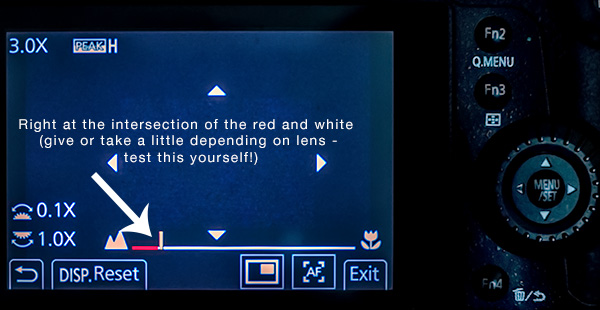 Camera back of the GH5 showing the Manual – Mode focus screen
Camera back of the GH5 showing the Manual – Mode focus screen
To get this view set your camera or lens to manual focus mode and touch the focus ring. The assist will give a small 10X magnified view. You won’t need this. Bring your attention to the bar across the bottom. There is a white line that goes from macro to mountain. Just before it gets to the mountain you’ll see a red bar. That’s the sweet spot. Set your focus right in the notch between the red and white portions of the stripe. Done! Test this for yourself.
 Milky Way with Juniper, Sedona, AZ Lumix G 8MM Fisheye f 3.5 lens
Milky Way with Juniper, Sedona, AZ Lumix G 8MM Fisheye f 3.5 lens
The other important piece of the puzzle is to use the fastest lens available. Having a very wide aperture allows the sensor to be exposed to the most light allowing for lower ISO settings.
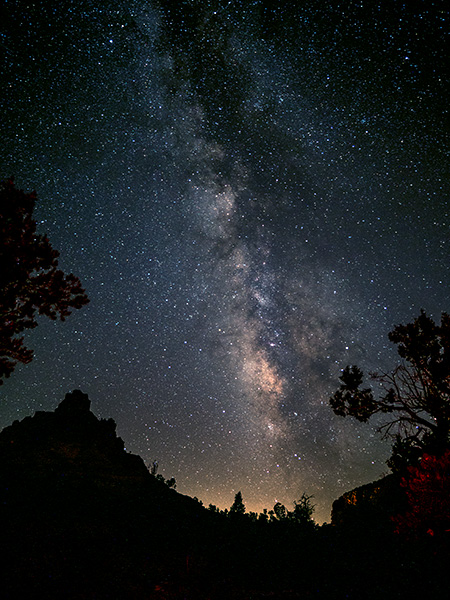 Bell Rock in silhouette to the left with the Milky Way, Sedona, AZ with 12mm Leica DG Summilux f1.4 lens
Bell Rock in silhouette to the left with the Milky Way, Sedona, AZ with 12mm Leica DG Summilux f1.4 lens
Images were captured with the Lumix GH5 camera. Lenses listed above.
In another post I’ll share some ideas on post, processing using Adobe’s Photoshop to get the most out of your captures.
Yours in Creative Photography, Bob

 The golden light of sunset sneaking through a hole in the clouds
The golden light of sunset sneaking through a hole in the clouds






















